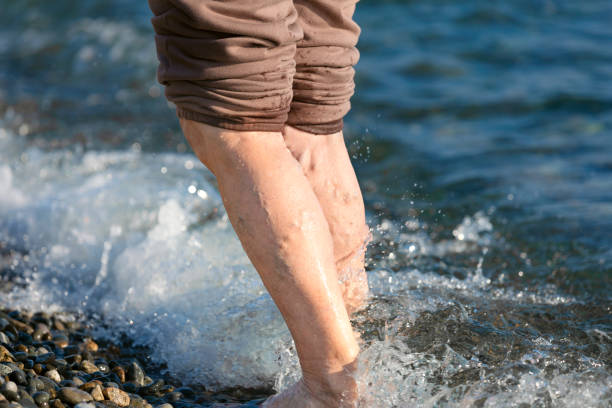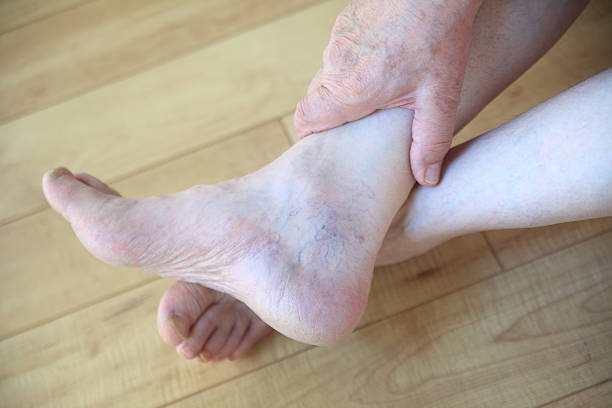Spider veins, those small, web-like blood vessels that become visible just beneath the surface of the skin, are a common cosmetic and medical concern. They often appear on the legs or face and, while typically harmless, can cause discomfort and self-consciousness. While genetics and age play a significant role in their development, there are steps you can take to prevent spider veins or reduce their appearance. By combining spider vein treatments with lifestyle changes, you can manage and even reduce the likelihood of developing spider veins over time.

What Causes Spider Veins?
Spider Veins may be caused by one or a combination of factors. Several factors can contribute to the development of spider veins, including:
- Genetics: If your family members have spider veins, you’re more likely to develop them.
- Age: As we age, our veins weaken, making us more prone to spider veins.
- Hormonal Changes: Pregnancy, menopause, and the use of birth control can affect vein health due to hormonal fluctuations.
- Prolonged Standing or Sitting: Jobs or activities that require long periods of standing or sitting can increase the pressure on veins, leading to spider veins.
- Sun Exposure: Overexposure to the sun can weaken blood vessels, particularly on the face.
- Venous Reflux in the larger (truncal) veins: When the valves in the veins that help regulate blood flow weaken or become damaged. This can cause blood to pool in the veins, leading to increased back pressure and the formation of spider or varicose veins.
Treatment Options for Spider Veins
If you’re already experiencing spider veins, there are several treatments that can effectively reduce or eliminate them. These treatments target the veins directly, either by collapsing them or causing them to be reabsorbed by the body.
1. Sclerotherapy
Sclerotherapy is one of the most common treatments for spider veins. During this procedure, a solution is injected into the spider veins, causing them to collapse and eventually fade away as the body absorbs them. Sclerotherapy is highly effective for treating spider veins on the legs and sometimes the face.
Benefits:
- Minimally invasive.
- Quick recovery with minimal downtime.
- Effective for treating spider veins and small varicose veins.
Considerations:
- Typically requires only a few sessions for noticeable results.
- Some temporary bruising or swelling may occur after the procedure.
2. VeinGogh Ohmic Thermolysis
VeinGogh is a minimally invasive treatment for spider veins that uses microburst technology to deliver controlled, high-frequency electrical energy directly to the affected veins. This energy generates heat, causing the veins to collapse and eventually be absorbed by the body.
Benefits:
- Minimally invasive, can be done in the outpatient clinic
- Effective for smaller, more superficial spider veins.
- Quick procedure with minimal downtime.
Best For:
- Small to medium-sized spider veins on the legs.
Considerations:
- Multiple sessions may be required to achieve the best results.
- Some redness may occur after treatment, but this typically resolves quickly.
- Mild skin discolouration may take a while to resolve (depending on individual skin type)
3. Radiofrequency Ablation (RFA)
Radiofrequency ablation (RFA) is a minimally invasive procedure that uses radiofrequency energy to heat and close off the affected veins. This treatment does not directly target the spider veins, but is used for larger truncal veins (for example the long saphenous vein), when there is evidence of venous reflux on the ultrasound scan. The heat from the radiofrequency energy causes the vein to collapse, and the body reroutes blood through healthier veins.
It targets the “root cause” of the problem. Treating the underlying reflux will not only help mitigate the risk of recurrence of spider veins, but also treat concomitant symptoms of venous reflux (eg. heavy crampy legs, swelling)
Benefits:
- Minimally invasive with long-lasting results- targets the “root cause” of the problem.
- Minimal downtime after the procedure
Best For:
- Patients with concomitant venous reflux in the truncal veins (eg. long saphenous vein).
Considerations:
- RFA may require sedation or general anesthesia, and mild discomfort may occur during recovery.
- Does not directly treat superficial spider veins.

Lifestyle Changes to Prevent Spider Veins
While treatments can address existing spider veins, making specific lifestyle changes can help prevent spider veins from forming or worsening. These changes focus on improving circulation, reducing pressure on the veins, and promoting overall vein health.
1. Stay active and exercise regularly.
Regular physical activity improves blood circulation, which helps prevent blood from pooling in the veins. Low-impact exercises such as walking, swimming, and cycling are particularly beneficial for vein health. Exercise strengthens the muscles in your legs, which in turn helps support the veins in pumping blood back to the heart.
- Tip: Aim for at least 30 minutes of moderate exercise each day to improve circulation.
2. Maintain a healthy weight
Carrying excess weight can put additional pressure on your veins, particularly in the legs, increasing the risk of developing spider veins. Maintaining a healthy weight through a balanced diet and regular exercise can help reduce this pressure and promote better vein health.
- Tip: Focus on eating a diet rich in fruits, vegetables, lean proteins, and whole grains to support overall health and circulation.
3. Elevate your legs
If you spend long periods sitting or standing, try to elevate your legs when resting. Elevating your legs above heart level encourages blood flow back to the heart and reduces pressure in the veins. This can help prevent the formation of spider veins and reduce swelling in the legs.
- Tip: Elevate your legs for 15 to 20 minutes a few times a day, especially if you’ve been standing or sitting for long periods.
4. Wear compression stockings.
Compression stockings apply gentle pressure to the legs, helping improve blood flow and prevent blood from pooling in the veins. They are especially helpful if you have a job that requires prolonged standing or sitting. Compression stockings come in various degrees of tightness, so consult your healthcare provider to find the most suitable modality for you.
- Tip: Wear compression stockings during long flights, car rides, or on days when you’ll be on your feet for extended periods. They should ideally be worn in the day, when the effect of gravity is greatest. The effect of gravity is negated at night when lying flat during sleep, so stockings might not be helpful at this time.
5. Avoid prolonged sitting or standing.
Sitting or standing for extended periods can make it harder for blood to flow properly through your veins, increasing the risk of spider veins. If your job requires you to sit or stand for long periods, make an effort to move around every hour to promote circulation. This helps to activate the calf muscle pump which in turn pushes pooled blood away from the feet and back to the heart.
- Tip: If you sit for long periods, try taking a 5-minute walking break every hour. If you stand for long periods, shift your weight from one leg to the other or take small walks during breaks.
6. Protect your skin from the sun.
Sun exposure can weaken the skin and blood vessels, leading to the development of spider veins, particularly on the face. Wearing sunscreen, hats, and protective clothing can help protect your skin and reduce the risk of spider veins caused by sun damage.
- Tip: Use a broad-spectrum sunscreen with at least SPF 30 on all exposed skin, especially if you’re outdoors for extended periods.
7. Limit alcohol consumption.
Excessive alcohol consumption can cause blood vessels to dilate, which may contribute to the development of spider veins, particularly on the face. Limiting alcohol intake can help protect your veins and overall health.
- Tip: Stick to moderate drinking guidelines, which recommend no more than one drink per day for women and two drinks per day for men.
Conclusion
Preventing spider veins involves a combination of effective treatments and healthy lifestyle changes. While medical treatments such as sclerotherapy, VeinGogh ohmic thermolysis, and radiofrequency ablation can reduce the appearance of existing spider veins, lifestyle changes like staying active, wearing compression stockings, and maintaining a healthy weight can help prevent spider veins from forming or worsening.
By making these changes and consulting with a healthcare provider about the best treatment options for your condition, you can improve your vein health and reduce the likelihood of spider veins in the future.







